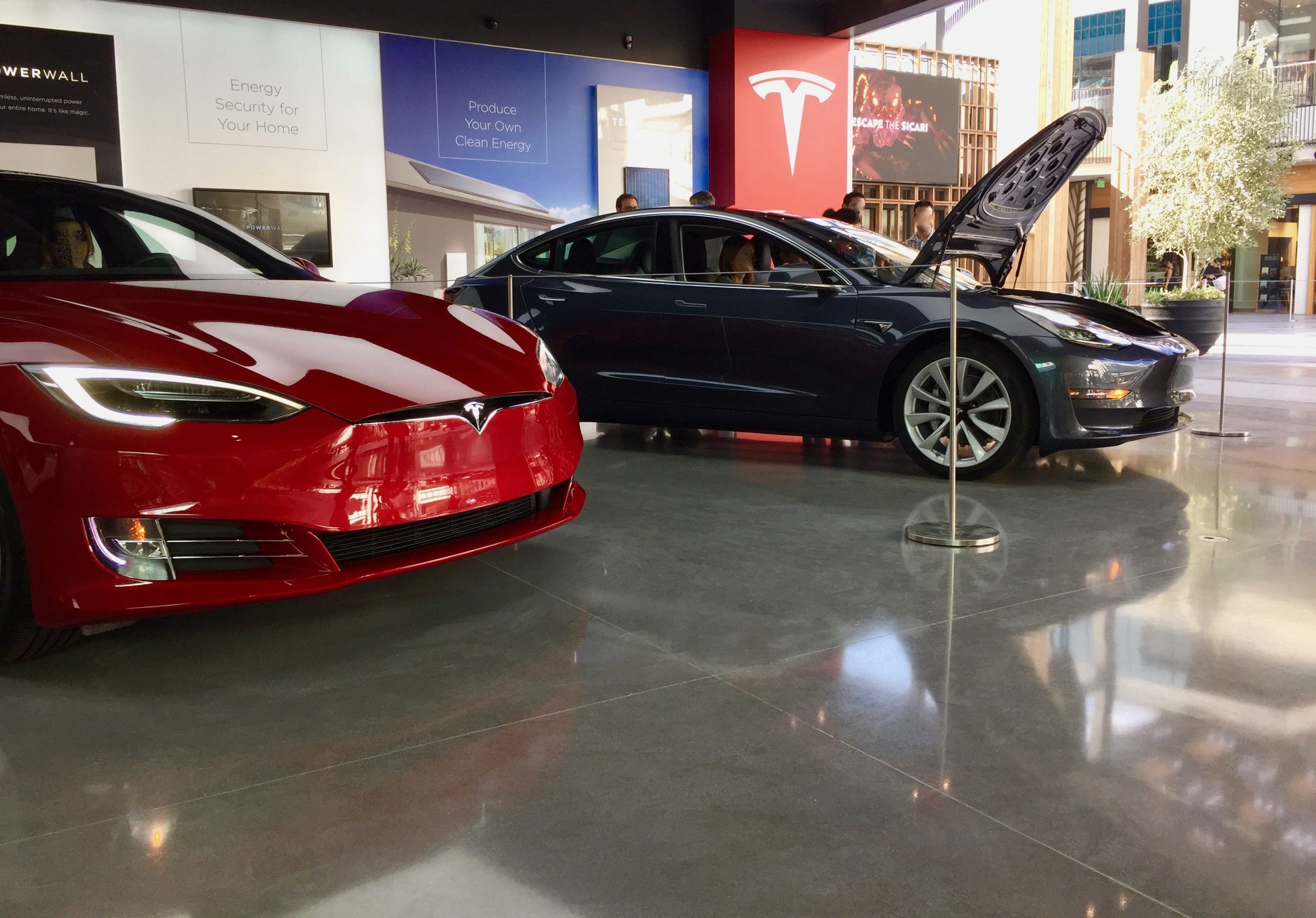
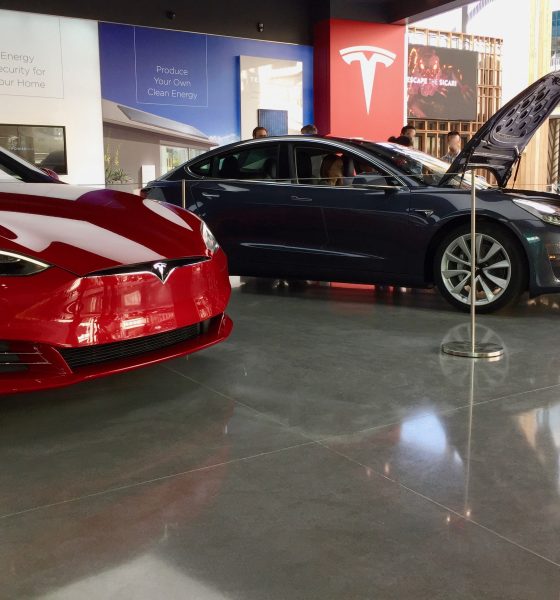
News
Tesla set to benefit as Congress considers EV tax credit extension
Tesla, General Motors and other automakers are pushing Washington for tax extenders that would extend the federal incentive for electric vehicle purchases.
Talks in the U.S. Congress over the weekend focused on the reinstatement of tax extenders that will not only benefit electric car manufacturers but those involved in biofuel and short-line railroad industries. If the Growing Renewable Energy and Efficiency Now (GREEN) Act gets the thumbs up, the cap for EV sales for manufacturers will be raised to 600,000 from 200,000 units and also reduce the tax credit from $7,500 to $7,000.
There will also be tax credits for the purchase of used electric vehicles with certain limitations such as the vehicle was used and registered in the U.S., will be sold for less than $25,000, tax credit can’t exceed 30 percent of the selling price, among others.
“Thanks to bipartisan, broad-based support, we believe the EV tax-credit extension is very well-positioned for enactment. “A large and diverse set of stakeholders — including environmentalists, public health groups, automakers and utilities — are urging Congress to act given its consequences for American global competitiveness, clean air and climate change,” said Mike Carr of the EV Drive Coalition that consists of Tesla, GM, and other electric vehicles and equipment giants.
The current tax credit is phased out when a manufacturer such as Tesla hits 200,000 vehicle sales, a cap already reached by Tesla and GM in Q3 2018 and Q4 2018, respectively. This means that those who will buy Tesla electric vehicles starting January 1, 2020 are no longer eligible for tax credits. Under the current rules, Tesla vehicles delivered on or before Dec. 31, 2018 enjoyed $7,500 federal tax credit while those delivered between Jan. 1 to June 30 this year received incentives reduced by half. Those who got their Teslas July 1 through the end of this year only received $1,875 tax credits.
Originally, the tax credit for electric vehicles was enacted by Congress in 2008 to give the EV market a boost. The tax credit is a big factor in the purchase decision of car buyers when considering electric vehicles. Aside from benefiting consumers directly by making electric vehicles — such as the upcoming Tesla Cybertruck — more affordable, a proper reform levels the playing field for vehicle manufacturers while giving consumers more options to choose from.
The GREEN Act discussion draft was initiated in November by House Ways and Means Subcommittee on Select Revenue Measures Chairman Mike Thompson and Committee Democrats.
“This bill will build on existing tax incentives that promote renewable energy and increase efficiency and create new models for technology and activity to reduce our carbon footprint. I’ve long said that if we don’t address climate change, nothing else matters as we won’t have a planet to pass on to our next generation. The GREEN Act is a critical step forward in our fight to tackle climate change head on,” Chairman Thompson said.
Of course, the lobbying of Tesla and other EV manufacturers does not go unopposed. In June, a trade association representing fuel and petrochemical manufacturers and refiners met with members of Congress to insist on how tax breaks may cost the government as much as $15.7 billion over 10 years. Meanwhile, proponents and supporters of the GREEN Act that would provide tax extenders emphasized the benefits of more electric vehicles on the road in terms of sustainability, how the industry creates American jobs, and how it helps the U.S. ensure energy independence and security.
As 2019 draws to a close, Tesla adjusted the price of the Model 3 and also sent out an email to encourage consumers to place their orders to still be eligible for the federal tax credit.

News
Tesla earns top honors at MotorTrend’s SDV Innovator Awards
MotorTrend’s SDV Awards were presented during CES 2026 in Las Vegas.

Tesla emerged as one of the most recognized automakers at MotorTrend’s 2026 Software-Defined Vehicle (SDV) Innovator Awards.
As could be seen in a press release from the publication, two key Tesla employees were honored for their work on AI, autonomy, and vehicle software. MotorTrend’s SDV Awards were presented during CES 2026 in Las Vegas.
Tesla leaders and engineers recognized
The fourth annual SDV Innovator Awards celebrate pioneers and experts who are pushing the automotive industry deeper into software-driven development. Among the most notable honorees for this year was Ashok Elluswamy, Tesla’s Vice President of AI Software, who received a Pioneer Award for his role in advancing artificial intelligence and autonomy across the company’s vehicle lineup.
Tesla also secured recognition in the Expert category, with Lawson Fulton, a staff Autopilot machine learning engineer, honored for his contributions to Tesla’s driver-assistance and autonomous systems.
Tesla’s software-first strategy
While automakers like General Motors, Ford, and Rivian also received recognition, Tesla’s multiple awards stood out given the company’s outsized role in popularizing software-defined vehicles over the past decade. From frequent OTA updates to its data-driven approach to autonomy, Tesla has consistently treated vehicles as evolving software platforms rather than static products.
This has made Tesla’s vehicles very unique in their respective sectors, as they are arguably the only cars that objectively get better over time. This is especially true for vehicles that are loaded with the company’s Full Self-Driving system, which are getting progressively more intelligent and autonomous over time. The majority of Tesla’s updates to its vehicles are free as well, which is very much appreciated by customers worldwide.
Elon Musk
Judge clears path for Elon Musk’s OpenAI lawsuit to go before a jury
The decision maintains Musk’s claims that OpenAI’s shift toward a for-profit structure violated early assurances made to him as a co-founder.

A U.S. judge has ruled that Elon Musk’s lawsuit accusing OpenAI of abandoning its founding nonprofit mission can proceed to a jury trial.
The decision maintains Musk’s claims that OpenAI’s shift toward a for-profit structure violated early assurances made to him as a co-founder. These claims are directly opposed by OpenAI.
Judge says disputed facts warrant a trial
At a hearing in Oakland, U.S. District Judge Yvonne Gonzalez Rogers stated that there was “plenty of evidence” suggesting that OpenAI leaders had promised that the organization’s original nonprofit structure would be maintained. She ruled that those disputed facts should be evaluated by a jury at a trial in March rather than decided by the court at this stage, as noted in a Reuters report.
Musk helped co-found OpenAI in 2015 but left the organization in 2018. In his lawsuit, he argued that he contributed roughly $38 million, or about 60% of OpenAI’s early funding, based on assurances that the company would remain a nonprofit dedicated to the public benefit. He is seeking unspecified monetary damages tied to what he describes as “ill-gotten gains.”
OpenAI, however, has repeatedly rejected Musk’s allegations. The company has stated that Musk’s claims were baseless and part of a pattern of harassment.
Rivalries and Microsoft ties
The case unfolds against the backdrop of intensifying competition in generative artificial intelligence. Musk now runs xAI, whose Grok chatbot competes directly with OpenAI’s flagship ChatGPT. OpenAI has argued that Musk is a frustrated commercial rival who is simply attempting to slow down a market leader.
The lawsuit also names Microsoft as a defendant, citing its multibillion-dollar partnerships with OpenAI. Microsoft has urged the court to dismiss the claims against it, arguing there is no evidence it aided or abetted any alleged misconduct. Lawyers for OpenAI have also pushed for the case to be thrown out, claiming that Musk failed to show sufficient factual basis for claims such as fraud and breach of contract.
Judge Gonzalez Rogers, however, declined to end the case at this stage, noting that a jury would also need to consider whether Musk filed the lawsuit within the applicable statute of limitations. Still, the dispute between Elon Musk and OpenAI is now headed for a high-profile jury trial in the coming months.
News
Tesla Giga Shanghai celebrates 5 million electric drive unit milestone
The milestone was celebrated by the company in a post on its official Weibo account.
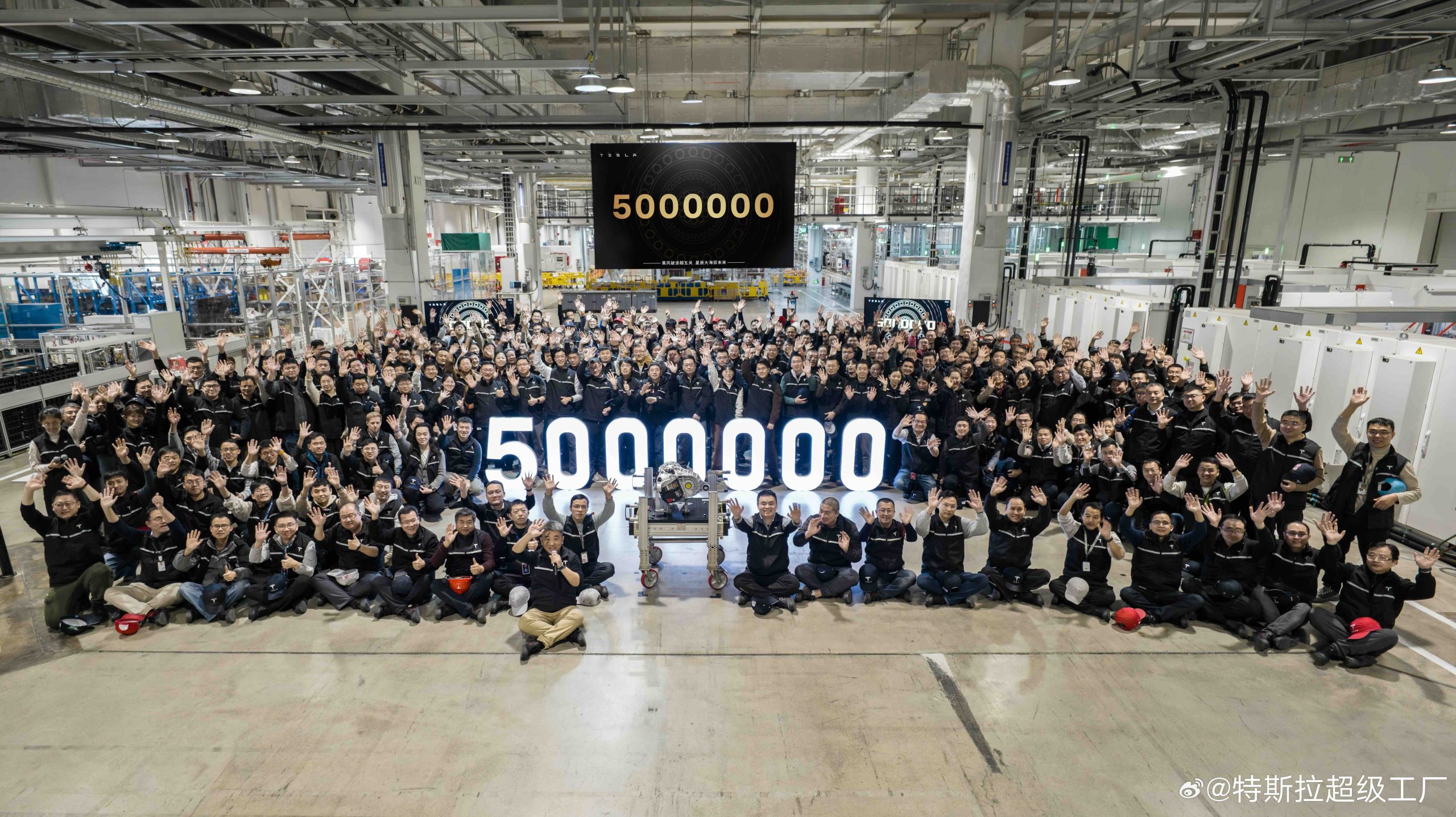
Tesla China has reached another manufacturing milestone at Gigafactory Shanghai, rolling out the facility’s 5 millionth locally produced drive unit.
The milestone was celebrated by the company in a post on its official Weibo account. In its post, the Giga Shanghai team could be seen posing with the 5 millionth drive unit.
Giga Shanghai’s major benchmark
The milestone drive unit was produced at Gigafactory Shanghai, which produces the Model Y and the Model 3. In a release, Tesla China noted that its three-in-one integrated electric drive system combines the motor, gearbox, and inverter into a single compact assembly. This forms a powerful “heart” for the company’s electric cars.
Tesla China also noted that its drive units’ integrated design improves energy conversion efficiency while reducing overall weight and complexity, benefits that translate into stronger performance, improved handling, and longer service life for its vehicles.
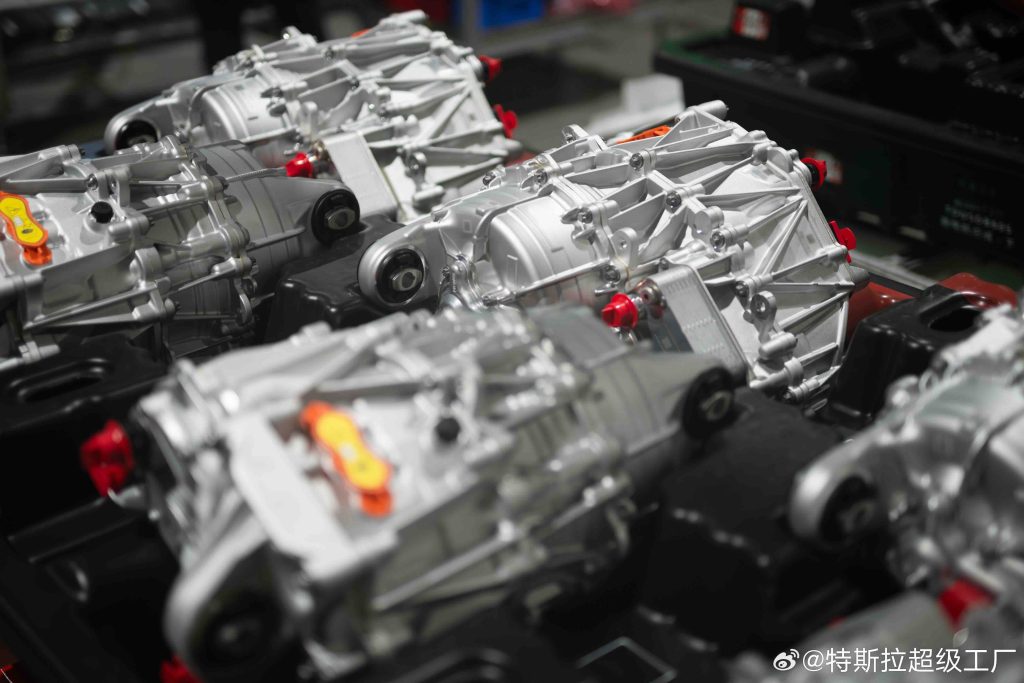
The new milestone builds on earlier achievements at the same site. In July 2024, Tesla announced that its 10 millionth electric drive system globally had rolled off the line at the Shanghai plant, making it the first self-produced Tesla component to reach that volume.
More recently, the factory also produced its 4 millionth China-made vehicle, a Model Y L. The factory has also continued hitting global production milestones, rolling out Tesla’s 9 millionth EV worldwide late last year, with the landmark vehicle being a Tesla Model Y.
Tesla China’s role
Construction of Giga Shanghai began in January 2019, with production starting by the end of that year. This made it the first wholly foreign-owned automotive manufacturing project in China. The facility began delivering Model 3 vehicles locally in early 2020 and added Model Y production in 2021. The plant is now capable of producing about 1 million vehicles annually.
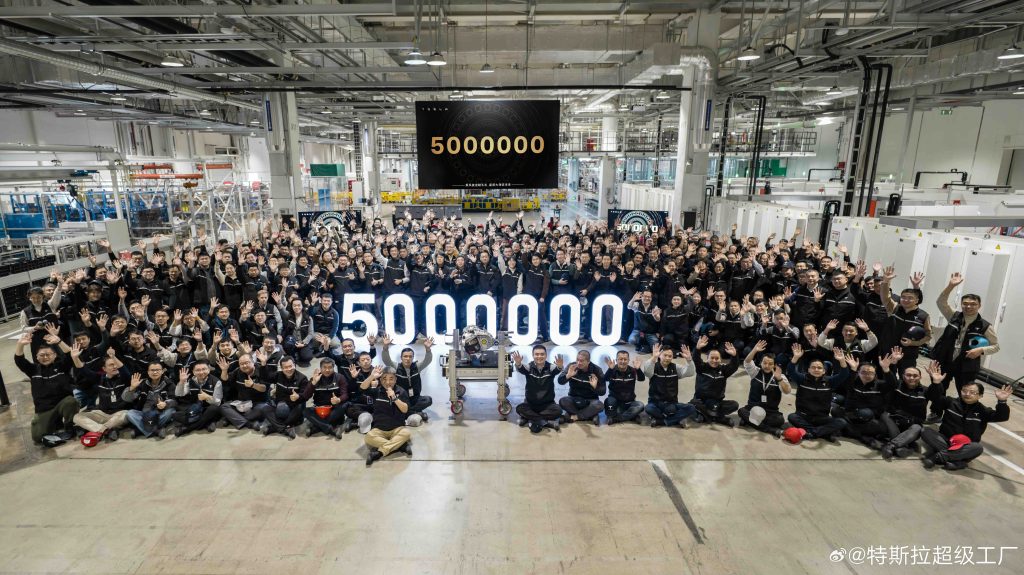
Throughout 2025, Giga Shanghai delivered 851,732 vehicles, representing a 7.08% year-on-year decline, according to data compiled by CNEVPost. Even so, recent months showed renewed momentum.
In December alone, Tesla China recorded wholesale sales of 97,171 vehicles, including domestic deliveries and exports, making it the company’s second-best monthly total on record, per data from the China Passenger Car Association. Retail sales during December reached roughly 94,000 units, up about 13% year over year.








